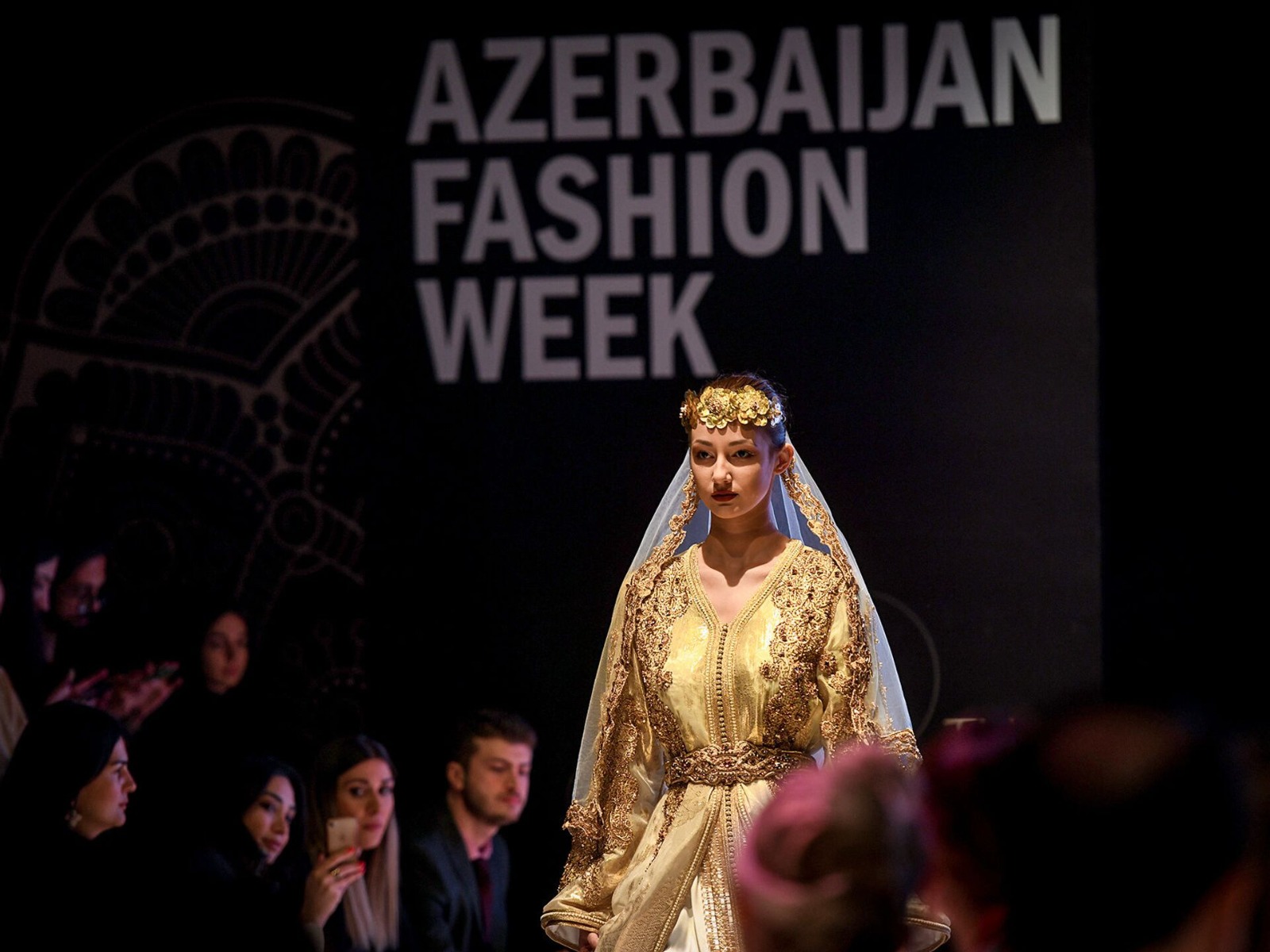Azerbaijan’s Fashion Evolution
Tradition and Modernity Converge
A compelling fusion of historical roots and forward-thinking innovation marks Azerbaijan’s fashion journey. From its deep cultural origins to its present-day transformation, Azerbaijani fashion reflects not only the country’s past but also its aspirations on the global stage.
A Rich Cultural Foundation
Azerbaijani fashion is anchored in its rich textile traditions, where clothing was once crafted for functionality and cultural expression. The kelaghayi, a traditional silk headscarf, exemplifies this, adorned with intricate patterns and symbolic designs. Historically, Azerbaijani attire was closely linked with craftsmanship, using textiles like silk from Sheki and wool from Ganja to create luxurious and meaningful garments. Batik techniques in fabric-making and intricate embroidery were expressions of regional identity, and garments were used to signify social standing.
During the Soviet era, like many post-Soviet states, Azerbaijani fashion was constrained by ideological uniformity. Traditional styles were pushed aside for Soviet norms, and fashion creativity was largely suppressed. However, even under these constraints, elements of Azerbaijani heritage survived, often discreetly through locally sourced materials. The traditional craft was never entirely lost.
The Post-Soviet Renaissance
The collapse of the Soviet Union in 1991 heralded a new era for Azerbaijani fashion. As the country regained its cultural and artistic autonomy, designers found themselves free to reconnect with national aesthetics and infuse them with modern sensibilities. This was a period of rediscovery, where traditional textiles, patterns, and motifs found their way back into the spotlight, but with a fresh, contemporary edge. For example, garments inspired by Buta motifs—an ancient symbol in Azerbaijani design—were given new life in modern collections.
In the early 2000s, Baku began emerging as a center of fashion, using its oil wealth and burgeoning cosmopolitan identity to fuel creative industries. Soviet-era factories were repurposed, new schools of design were opened, and fashion entrepreneurs began carving out a distinct space in the market. This led to the birth of a thriving contemporary fashion scene that actively draws on the past while keeping pace with global trends.
Contemporary Fashion in Baku: A Global Stage
In recent years, Baku has made a determined push to position itself as a global fashion hub. The establishment of Azerbaijan Fashion Week (AFW) in 2015 was a pivotal moment in the country’s fashion evolution. The event provides a platform for both established and emerging designers to showcase their work, promoting Azerbaijani fashion internationally and offering a stage for creative expression. Projects like Stock In Stock Out, which bring together leading Azerbaijani designers, further solidify Baku’s place in the fashion world by curating collections that highlight the country’s unique blend of traditional craftsmanship and contemporary design.
One of the leading designers, Rufat Ismayil, has propelled Azerbaijani fashion onto the global map, with celebrities like Jennifer Lopez and Adele donning his creations. His brand, Afffair, is known for merging local fabrics and patterns with avant-garde designs, giving Azerbaijani craftsmanship a modern, luxurious twist. These designers continue to push the boundaries of fashion, drawing on Azerbaijan’s vast cultural history while creating garments that resonate on an international level.
Baku’s Aspiration to Become a Fashion Capital
As Baku vies to become the next major fashion capital, it embraces its role as a cultural and geographical bridge between East and West. The city’s growing status as a fashion destination reflects its broader transformation into a global hub for innovation and culture. Azerbaijani fashion today is a blend of contrasts—bold streetwear coexists with elegant haute couture, while traditional motifs are reimagined in futuristic designs. The influence of Azerbaijan's rich silk traditions and intricate embroidery techniques can still be seen in contemporary collections, with designers paying homage to their roots even as they look toward the future.
According to recent research, Baku is increasingly seen as a rising fashion city that actively engages with international markets while supporting local talent. With a youthful energy and commitment to sustainability, many of Azerbaijan’s young designers are also tapping into global trends like eco-consciousness and slow fashion. This movement has been supported by creating concept stores and design workshops that enable homegrown talents to collaborate, innovate, and gain exposure.
Moreover, the city's unique geography—situated at the crossroads of Europe, Asia, and the Middle East—makes it a melting pot of influences. This blend is distinctly visible in the fashion scene, where European minimalism meets bold Middle Eastern flair, all underpinned by Azerbaijani craftsmanship.
The Future of Azerbaijani Fashion
As the world watches Baku’s ascent on the global fashion stage, it becomes clear that Azerbaijani fashion is much more than a trend—it reflects a society that deeply values its cultural heritage while eagerly embracing modernity. With young designers pushing boundaries, established brands gaining international recognition, and events like Azerbaijan Fashion Week attracting global attention, the country’s fashion scene is poised to become a severe contender in the worldwide market.
In the coming years, the continued growth of the Azerbaijani fashion industry will likely be driven by its ability to balance tradition with innovation. Designers will continue to draw inspiration from Azerbaijan’s rich history while experimenting with new materials, technologies, and global influences, ensuring that the country's fashion identity remains both distinctive and dynamic.
In a nutshell, Azerbaijani fashion is a story of a nation at the intersection of its past and future, a tale that is woven together by tradition, innovation, and endless creativity.


